Birdwatching in Oregon's Outback
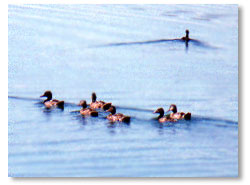 Birds are prevalent throughout Lake County - from the sagebrush covered hills to the wetlands to the forest covered mountains. There is a very large variety of birds to be seen, in keeping with the many ecosystems, from small songbirds to large raptors, from ducks to cranes, there's something here for everyone.
Birds are prevalent throughout Lake County - from the sagebrush covered hills to the wetlands to the forest covered mountains. There is a very large variety of birds to be seen, in keeping with the many ecosystems, from small songbirds to large raptors, from ducks to cranes, there's something here for everyone.
Although you can see birds anywhere, information on three locations will be discussed on this site at this time - the Warner Wetlands, Summer Lake Wildlife Area and Goose Lake. More locations and sites will be added - so keep checking back! Please feel free to e-mail any corrections.
More Info: Fremont National Forest Bird List
Warner Wetlands
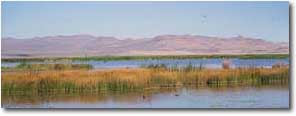 The Warner Wetlands is nestled at the base of Hart Mountain in eastern Lake County. The wetlands are comprised of several large bodies of water, including Hart, Warner, and Crump lakes and a wide spread of marshlands.
The Warner Wetlands is nestled at the base of Hart Mountain in eastern Lake County. The wetlands are comprised of several large bodies of water, including Hart, Warner, and Crump lakes and a wide spread of marshlands.
There is a walking trail and several bird blinds at the Wetlands along with an outhouse and several informational boards.
The huge variety of birds that pass through during migration or choose the wetlands as a nesting place makes this area an excellent stopping place for any bird enthusiast.
Violet Green Swallow
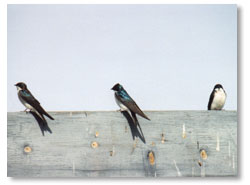 The violet green swallows were gathering in thick social crowds and I was able to get very close for some wonderful pictures.
The violet green swallows were gathering in thick social crowds and I was able to get very close for some wonderful pictures.
American Avocet
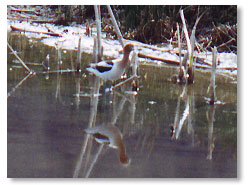 The American avocet is a beautiful medium-sized wading bird easily recognizable by its white body with black wings and red head. During the winter the head is a pale buff color. It has a long black up-curving bill and long black legs.
The American avocet is a beautiful medium-sized wading bird easily recognizable by its white body with black wings and red head. During the winter the head is a pale buff color. It has a long black up-curving bill and long black legs.
This picture was taken in early May.
White-Face Ibis
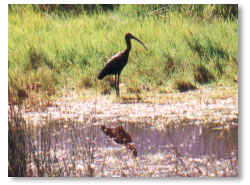 The white-face ibis is distinguished by it's thick down-curving bill. It is a solid-looking mid to large size wading bird.
The white-face ibis is distinguished by it's thick down-curving bill. It is a solid-looking mid to large size wading bird.
This photo was shot in early June.
Sandhill Crane
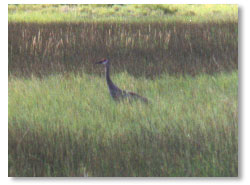 The sandhill crane is heard frequently during the breeding and nesting season throughout Lake County. This picture was taken in early June. Its mate was not far away.
The sandhill crane is heard frequently during the breeding and nesting season throughout Lake County. This picture was taken in early June. Its mate was not far away.
Sparrows
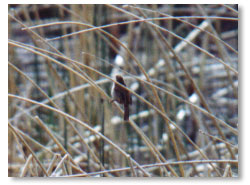 In the tall march grasses, sparrows and other marsh birds can be seen among the reeds.
In the tall march grasses, sparrows and other marsh birds can be seen among the reeds.
White Egret
 This white egret was spotted during one of my early spring trips to the Warner Wetlands (early May).
This white egret was spotted during one of my early spring trips to the Warner Wetlands (early May).
Summer Lake Wildlife Area
The Summer Lake Wildlife Area is located in central Lake County along HWY 31 at Summer Lake.
More than just a wildlife area, it is an excellent place to stop and see the birds. There are walking paths and roads (unpaved) through the area, making access easy for anyone.
This is also a popular hunting location for many bird hunters in the fall.
Cinammon Teal
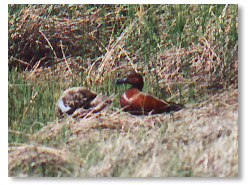 This pair of cinnamon teals was taking up residence in one of the many rush-filled waterways that wind through the wildlife area. Located fairly close to the road, they made for an easy photograph (taken early May).
This pair of cinnamon teals was taking up residence in one of the many rush-filled waterways that wind through the wildlife area. Located fairly close to the road, they made for an easy photograph (taken early May).
Killdeer
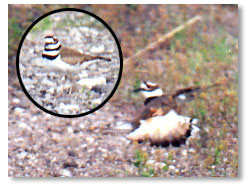 The killdeer is a spunky little bird, easily identified by the bold white and black face and chest markings and tan back. It is very vocal and will readily go into a broken wing display when it perceives a threat close to its nest or young.
The killdeer is a spunky little bird, easily identified by the bold white and black face and chest markings and tan back. It is very vocal and will readily go into a broken wing display when it perceives a threat close to its nest or young.
This photo was taken in early May.
Candian Geese
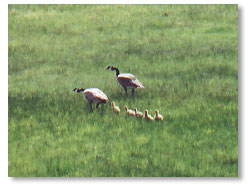 Canadian geese are a common sight in Lake County. This medium-sized goose is easily identified by its white chin band on a long, black neck. The body is brown with white on the underside of the tail.
Canadian geese are a common sight in Lake County. This medium-sized goose is easily identified by its white chin band on a long, black neck. The body is brown with white on the underside of the tail.
This photo was taken in early June.
Goose Lake
Goose Lake State Park is nestled on the Oregon Californa border 14 miiles south of Lake County. There is a campground and day use area located at the park. Hiking along the lake shore is limited due to the numerous marshes, but the lake and area around it offers good habitat for many birds.
Western Grebe
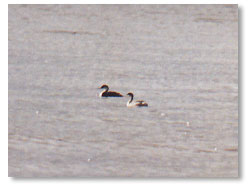 The western grebe is easily spotted and identified. It has a black upper body and a white neck and stomach. During courting season, lakes are noisy as they go about their mating displays; the male and female will run side by side across the surface of the water.
The western grebe is easily spotted and identified. It has a black upper body and a white neck and stomach. During courting season, lakes are noisy as they go about their mating displays; the male and female will run side by side across the surface of the water.
Long-billed Curlew
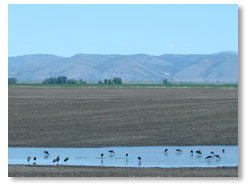 These long-billed curlews were spotted in a farmer's field just north of Goose Lake. This large wading bird stands at 20 to 26 inches and is most easily identified by its long, downward curving beak (about 8 inches). Its body color is a speckled brown. They are commonly seen in wet, marshy areas.
These long-billed curlews were spotted in a farmer's field just north of Goose Lake. This large wading bird stands at 20 to 26 inches and is most easily identified by its long, downward curving beak (about 8 inches). Its body color is a speckled brown. They are commonly seen in wet, marshy areas.